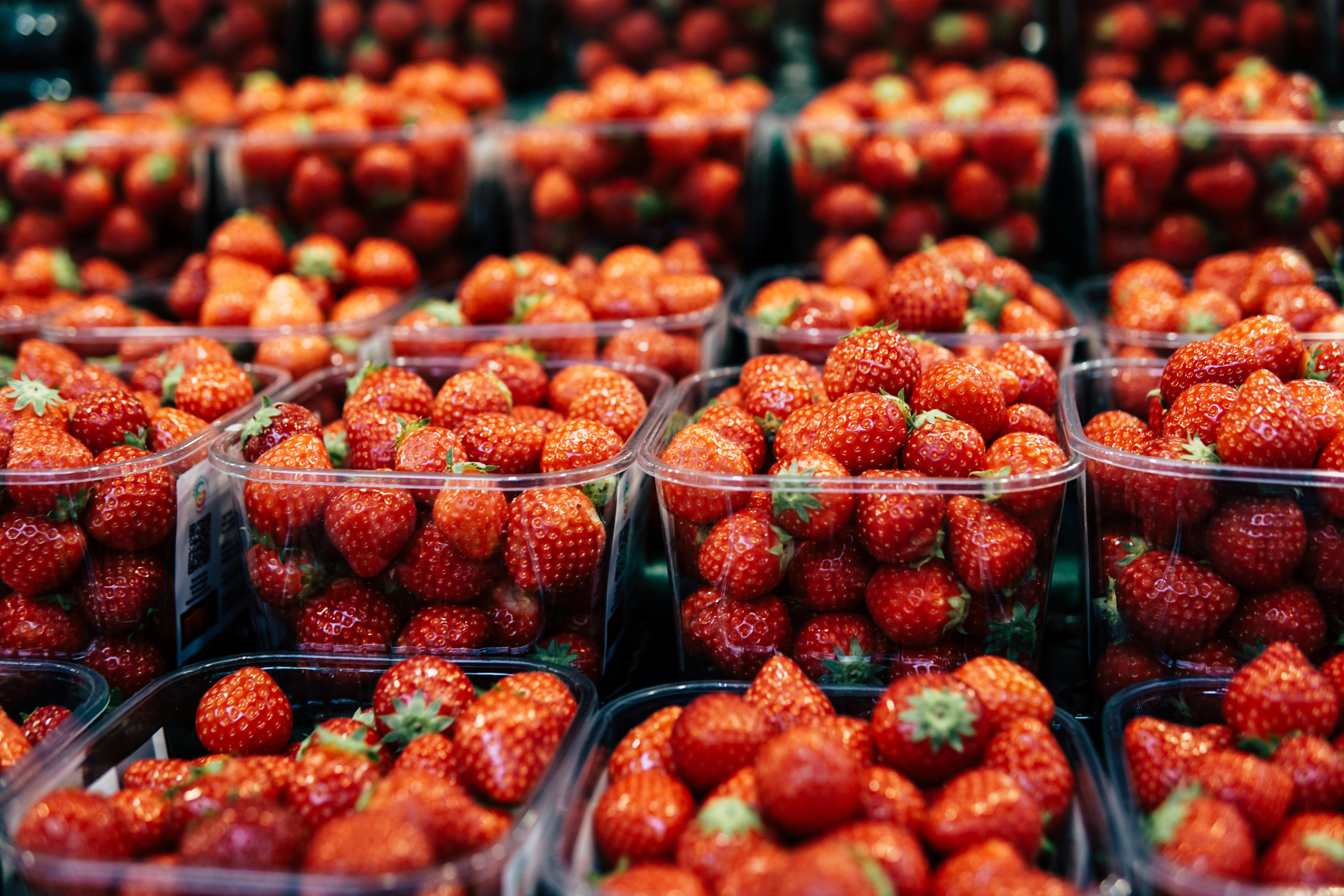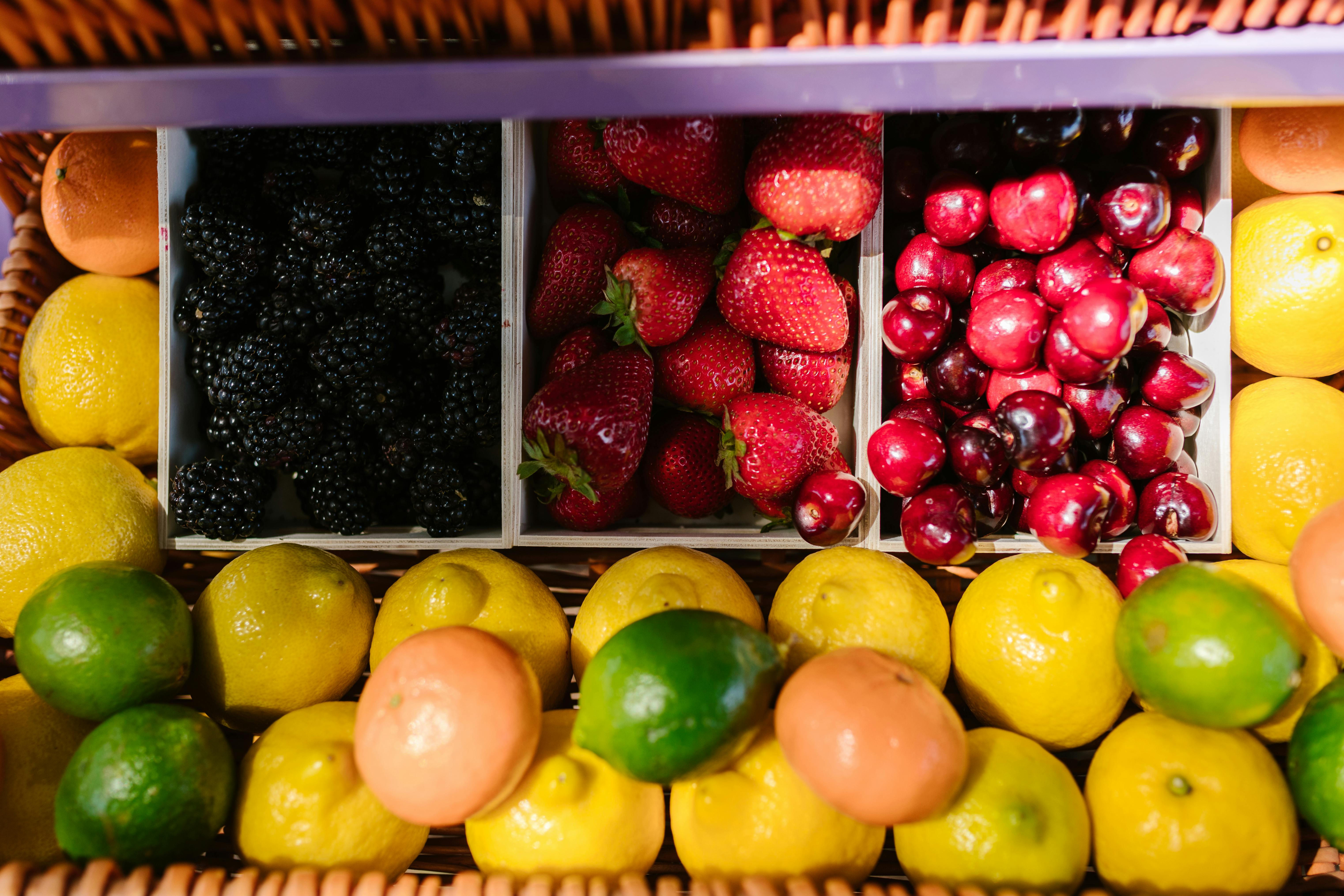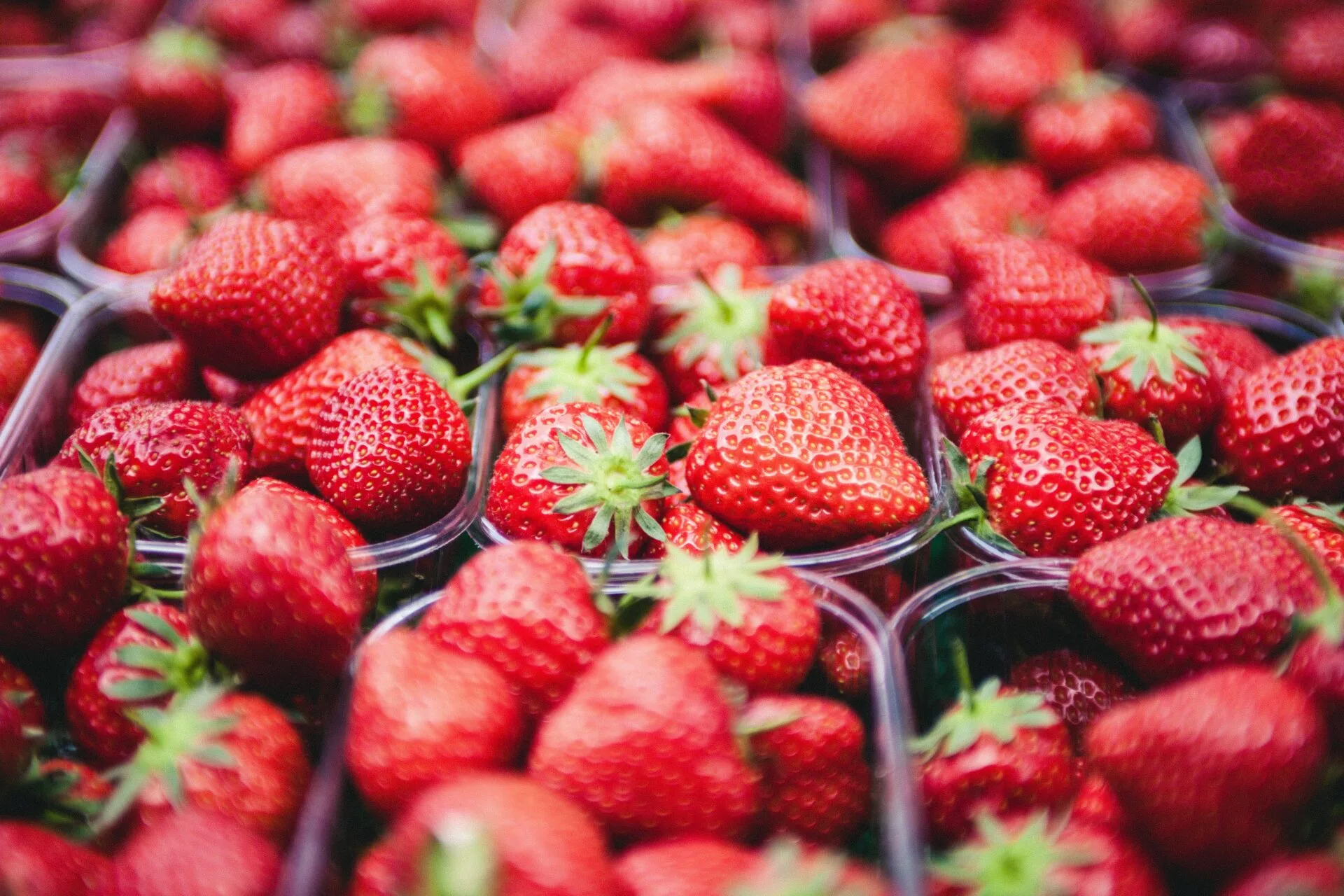If you are looking for a way to grow strawberries in colder climates, overwintering strawberries in containers is the perfect solution. Overwintering is the process of taking care of plants during the cold winter months so they can thrive in the spring and summer. This guide will provide you with all the information and tips you need to successfully overwinter strawberries in containers.To prepare strawberries for overwintering in containers, start by planting healthy strawberry plants in early fall. Choose a container that is at least 12 inches deep and has plenty of drainage holes in the bottom. Fill the container with a well-draining soil mixture and water thoroughly. Place the container in an area that receives full sun for most of the day and is protected from strong winds and cold temperatures. Water regularly, but do not overwater as this can cause root rot. Cut off any flowers or runners that appear during the season to promote healthy foliage growth. Mulch around the plants with straw or leaves to help protect from extreme cold temperatures and preserve soil moisture. Provide protection for the container if temperatures dip below 20 degrees Fahrenheit by wrapping it with burlap or plastic.
Selecting Suitable Containers for Overwintering Strawberries
Selecting the right containers for overwintering strawberries is an important part of successful strawberry cultivation. Strawberries need to be kept in a container that will protect them from the cold winter temperatures and provide them with adequate drainage. It’s also important to select a container that is large enough to accommodate the roots of the plant, as well as any additional soil or mulch that may be necessary. To ensure the best possible results, it’s important to choose an appropriate size and type of container for overwintering strawberries.
When selecting a container for overwintering strawberries, it’s important to consider both size and material. Strawberries need a container that’s at least six inches deep and 12 inches wide in order to accommodate their roots and any additional soil or mulch. Clay or plastic containers are ideal for this purpose, as they provide good drainage and insulation from the cold winter temperatures. If possible, it’s best to opt for a dark-colored container, as this can help absorb some of the sun’s heat during the day and retain it overnight.
Another factor to consider when selecting a suitable container for overwintering strawberries is ventilation. Without proper ventilation, plants can become susceptible to fungal diseases such as root rot due to inadequate air circulation. Therefore, it’s important to select a container that has adequate holes in its base or sides in order to allow air circulation. Additionally, if you’re using plastic containers, make sure they have UV protection in order to prevent sunlight from damaging your plants.
Finally, when selecting suitable containers for overwintering strawberries, make sure they are clean and free from disease-causing organisms such as fungi or bacteria. This can be done by thoroughly washing them before use with warm water and soap or vinegar solution. Additionally, if you’re going to be using plastic or clay containers, make sure they are free from cracks or holes which could allow water seepage or disease organisms inside.
By following these simple guidelines when selecting suitable containers for overwintering strawberries, you can ensure your plants remain healthy throughout the winter months and continue producing delicious fruit come springtime!
Choosing the Right Location to Overwinter Strawberries in Containers
Selecting the right location to overwinter strawberries in containers is critical for successful strawberry production. The ideal location should be in a sheltered area that is protected from strong winds and direct sunlight. If possible, the location should also have access to a source of water, such as a nearby pond or stream. It is important to consider the soil type when choosing a location for container gardening, as some soils are not suitable for growing strawberries. Sandy soils offer good drainage and allow air to circulate around roots, while clay soils may retain too much moisture and cause plants to become waterlogged.
It is important to remember that strawberries require full sun for at least six hours per day in order to produce fruit. When selecting a location, make sure there are no tall buildings or trees that could block out the sunlight. If possible, try to find an area that faces south or southwest as this will receive more direct sunlight during the day. Additionally, it is important to ensure that there is adequate airflow around the containers as this will help reduce humidity and prevent fungal diseases from developing on plants.
Finally, it is important to ensure that the chosen location has access to electricity so that any necessary lighting can be used during winter months when days are shorter and temperatures drop below freezing. Lighting can help keep plants warm and provide additional energy for growth during these colder months. Taking all of these factors into consideration will help ensure that your strawberry plants survive and thrive through the winter months in their containers.
Enhancing Soil Quality Before Planting Strawberries in Containers
Soil is a critical component of successful strawberry production in containers. Enhancing the soil quality before planting is essential to ensure that the plants reach their full potential. To do this, it is important to start with a nutrient-rich soil mix that contains organic matter. Compost, peat moss, or well-rotted manure are all great additions to the soil mix and will help provide the necessary nutrients for the plants.
It is also important to make sure that the soil has good drainage so that excess water does not become trapped and cause root rot. To achieve this, you should add sand or perlite to the soil mix. This will help keep it light and airy, allowing water to drain without becoming stagnant.
Another important factor to consider when enhancing soil quality is pH level. Strawberries prefer a slightly acidic soil with a pH between 5 and 6.5. If your soil is too alkaline, you can add sulfur or other acidifying agents to reduce the pH level. You should have your soil tested before planting in order to determine what kind of adjustments need to be made for optimal results.
Finally, adding mulch on top of the soil can help keep it healthy and retain moisture during periods of drought or hot weather. Organic mulches such as straw or leaves are ideal for this purpose as they will break down over time and add more nutrients back into the soil.
Ensuring that your container’s soil has adequate nutrients, good drainage, an appropriate pH level, and mulch can help maximize your strawberry production and ensure that your plants reach their full potential!
Planting Strawberries in Containers
Growing strawberries in containers is an excellent way to produce a big crop of sweet, juicy berries. Planting strawberries in containers can be done at any time of the year, but for best results it’s best to plant them in late summer or early fall. To successfully grow strawberries in containers, you should choose a container that is at least 12 inches deep and has adequate drainage holes. Fill the container with a well-draining potting soil mix that contains peat moss or compost. Plant your strawberry plants about 6 inches apart and cover with an inch or two of mulch. Water your plants thoroughly after planting and keep them watered throughout the growing season.
Pruning Strawberries Before Overwintering
Before overwintering your strawberry plants, it is important to prune them back to ensure healthy growth in the spring. Pruning helps remove diseased or damaged leaves and stems, as well as encourage new growth from the crown of the plant. Begin pruning your strawberry plants by cutting away any dead or damaged leaves and stems from the plant. Then, remove all the runners from the base of the plant to prevent overcrowding and encourage new growth from the crown of each plant. After pruning, apply a layer of mulch around each strawberry plant to help retain moisture and protect it during cold winter temperatures.
Overwintering your strawberry plants can help ensure a healthy crop come springtime. With proper planting and pruning techniques, you can enjoy a large harvest of sweet, juicy strawberries for years to come!

Applying Mulch to Protect the Soil for Overwintering Strawberries in Containers
Mulch is an essential part of protecting the soil for overwintering strawberries in containers. Mulch helps retain moisture in the soil, prevents weed growth, and protects the roots from extreme temperatures. Applying a layer of mulch around the base of each plant will help keep them healthy during winter dormancy. There are several types of mulches that can be used, including straw, grass clippings, shredded leaves, or wood chips. The best mulch for overwintering strawberries is a combination of straw and grass clippings or shredded leaves. This type of mulch will insulate the soil while still allowing air and water to penetrate it. A 2-3 inch layer is recommended to prevent weeds and retain moisture in the soil. Make sure to check the mulch regularly throughout winter and add more if needed. With proper care and maintenance, applying mulch to protect the soil for overwintering strawberries can help ensure healthy plants come springtime.
Watering the Plants Before and During Overwintering of Strawberries in Containers
Watering is an essential part of growing strawberries in containers. Proper watering before and during the overwintering period will ensure that your plants remain healthy and productive. Before overwintering, it is important to give your strawberry plants one last deep watering to help provide enough moisture for them to survive through the cold winter months. It is best to complete this deep watering about two weeks before the first expected frost in your area. After this deep watering, it is important to decrease your regular watering schedule as the temperatures begin to drop. This will help prepare your plants for dormancy as they enter into the overwintering period.
During overwintering, it is important to provide just enough water to keep the soil from drying out completely, but not so much that it becomes soggy or waterlogged. The amount of water needed will depend on several factors such as soil type, climate, temperature and humidity levels. Generally speaking, most strawberry plants in containers need about 1/4 inch of water every week during overwintering in order to stay healthy and vigorous. It is also a good idea to check your container regularly during this time for any signs of dehydration or mold growth due to excess moisture.
Insulating and Covering the Container-Grown Strawberries During Overwintering
Insulating and covering your container-grown strawberries during winter is an important step to help ensure a successful crop the following season. Strawberries are a cold-hardy fruit, but the containers they are grown in can be damaged if not properly insulated and covered. To protect your strawberry plants from freezing temperatures, you should cover the container with an insulating material such as burlap or straw. This will help keep the soil warm and protect the roots from extreme cold. Additionally, you should also cover the container with a frost blanket or plastic sheeting to provide additional insulation. Make sure that any covers used are securely fastened so that they don’t blow away in high winds or heavy snowfall.
When spring arrives, it is important to remove any insulation to allow for necessary air circulation around the container. During hot summer months, it may be beneficial to shade containers from direct sunlight with a tarp or other light cloth. Doing so can help reduce stress on plants and prevent premature ripening of fruits in hot weather.
By following these simple steps, you can help ensure your strawberry plants make it through winter and have a healthy crop come springtime!

Conclusion
Winterizing your strawberries in containers is a great way to ensure healthy plants and a bountiful harvest. By choosing the right container, burying it with insulation, and protecting it with a layer of mulch or straw, you can extend the life of your strawberry plant through freezing temperatures. Taking this extra step will also help to protect the plant from winter pests and diseases. When spring arrives, simply remove the mulch or straw and enjoy your berries!
With proper care, you can successfully overwinter strawberries in containers for many years. This can save you time and money in the long run by eliminating the need to buy new plants every year. Just follow these simple steps and you’ll be well on your way to harvesting delicious strawberries year after year!



